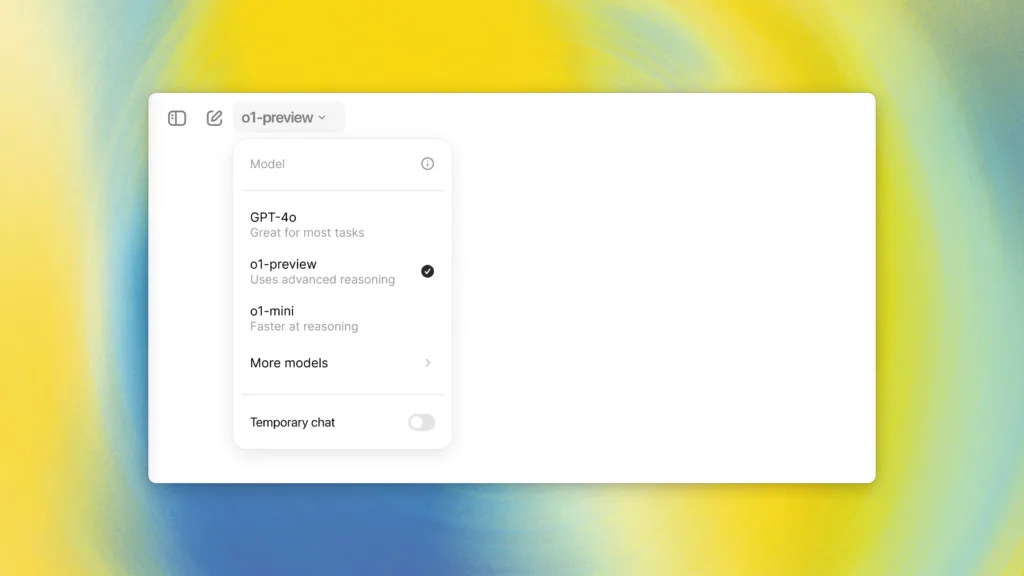OpenAI recently unveiled its latest AI model, the o1-preview, designed to tackle complex reasoning tasks, with a special focus on coding, mathematics, and science problems. Unlike previous iterations, the o1 model is optimized for detailed, multi-step problem solving, making it a powerful tool for industries that rely heavily on advanced analytics and precision.
Purpose and Key Features
The primary goal of OpenAI o1 is to handle more sophisticated and layered challenges, excelling in fields that require nuanced understanding and logical progression, such as theoretical physics, algorithm design, and high-level mathematics. Unlike general AI models, which often excel at broader conversational tasks, o1 is meticulously trained to break down complex problems into manageable steps, offering clarity and insight where simpler models might struggle.
Key Features Include:
- Precision in Science and Math: o1’s ability to process and solve complex scientific equations and high-level mathematical problems sets it apart from previous iterations.
- Advanced Coding Capabilities: From intricate debugging to designing efficient algorithms, o1 is built to assist software engineers and coders with increasingly complex demands.
- Enhanced Reasoning: o1 improves upon prior reasoning models by offering more accurate and detailed problem-solving pathways, drawing closer to how humans approach multifaceted tasks.
Advancements Over Previous Models
Compared to earlier versions like GPT-4, which excelled in general conversation, creative writing, and content generation, the o1-preview is a shift towards specialization. It narrows its focus on reasoning and technical problem solving, offering more reliable and accurate outputs for technical fields. This fine-tuning enables o1 to not just respond but to engage in deeper analysis and longer, more logical chains of thought, thus greatly expanding its utility in academic, scientific, and development environments.
Read more: OpenAI’s New Model, “Strawberry”: A Leap Towards the Future of AI
Limitations
Despite its powerful capabilities, OpenAI o1-preview comes with certain limitations. For instance, it does not include built-in web browsing, meaning it lacks the ability to fetch real-time data or gather information directly from the internet. Additionally, the model is currently not equipped with file upload functionalities, which restricts users from inputting files directly for analysis or problem-solving.
While these constraints may seem like setbacks, they are part of OpenAI’s gradual roll-out, allowing the team to focus on refining the core reasoning capabilities. Future updates may address these limitations as the platform evolves.
Target Audience: Developers and Power Users
OpenAI o1 is primarily aimed at developers, data scientists, researchers, and other advanced users who need an AI model capable of assisting with intricate tasks. These are individuals or teams who regularly engage with complex systems and require higher-level support to push the boundaries of innovation.
For developers, the enhanced coding capabilities are expected to dramatically speed up problem-solving in software development. In academic fields, particularly those focused on STEM, researchers could leverage o1 to solve sophisticated mathematical or scientific inquiries, potentially reducing the time spent on labor-intensive calculations and logical proofs.
Safety Enhancements
Another crucial element of the o1-preview is its improved safety features. OpenAI has built additional layers of safeguards into this model to prevent misuse or unintended outcomes. The model is designed to prioritize human oversight, ensuring that even with its powerful reasoning abilities, it remains a tool that supports human decision-making rather than replacing it. This is especially important in high-stakes fields like engineering and medicine, where an AI-driven mistake could have serious consequences.
Impact on Industries
The launch of OpenAI o1-preview is poised to make significant waves in various sectors, particularly in industries that rely on advanced reasoning tools, such as finance, healthcare, engineering, and academia. In finance, for example, the model’s complex problem-solving abilities could be used for sophisticated risk modeling or algorithmic trading. In healthcare, it could assist with diagnostic reasoning or medical research, improving the speed and accuracy of critical analyses.
In the broader tech industry, software developers and engineers stand to benefit most from o1’s advanced coding capabilities. The model’s ability to analyze, debug, and even offer optimization advice could revolutionize how software is developed, particularly for complex projects involving large codebases or intricate algorithms.
Conclusion
OpenAI o1-preview marks a significant milestone in the evolution of AI, with its specialized focus on reasoning and complex problem-solving. While it has some limitations in its current form, the model is already proving to be a game-changer for advanced users in technical fields. As it continues to evolve, it holds the potential to revolutionize multiple industries, offering enhanced precision and efficiency for tasks that were once too complex for traditional AI systems to handle.




Pingback: GitHub Previews OpenAI's o1 Models in GitHub Copilot - Buzz Feed Up
Pingback: Sam Altman's Vision of the Intelligence Age - Buzz Feed Up